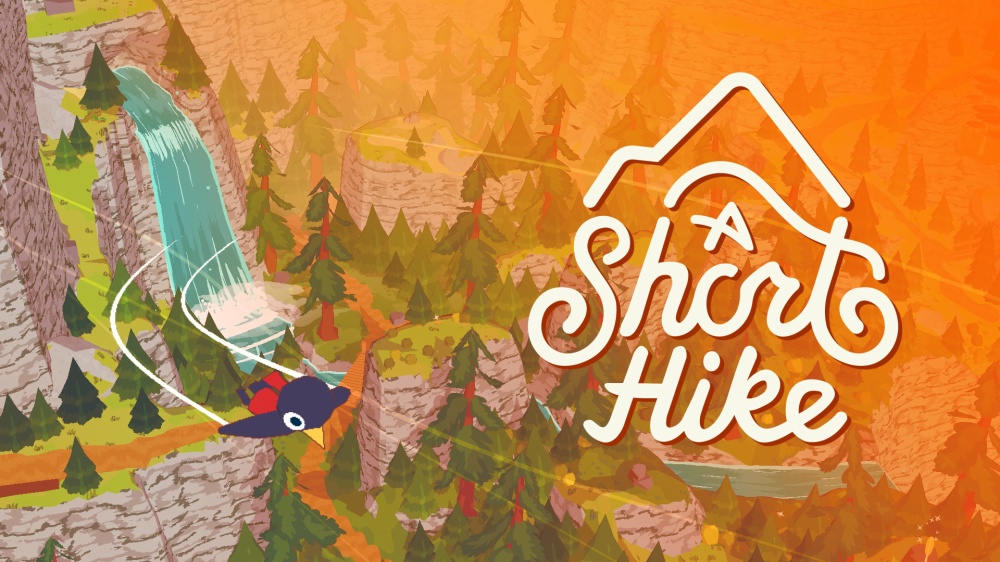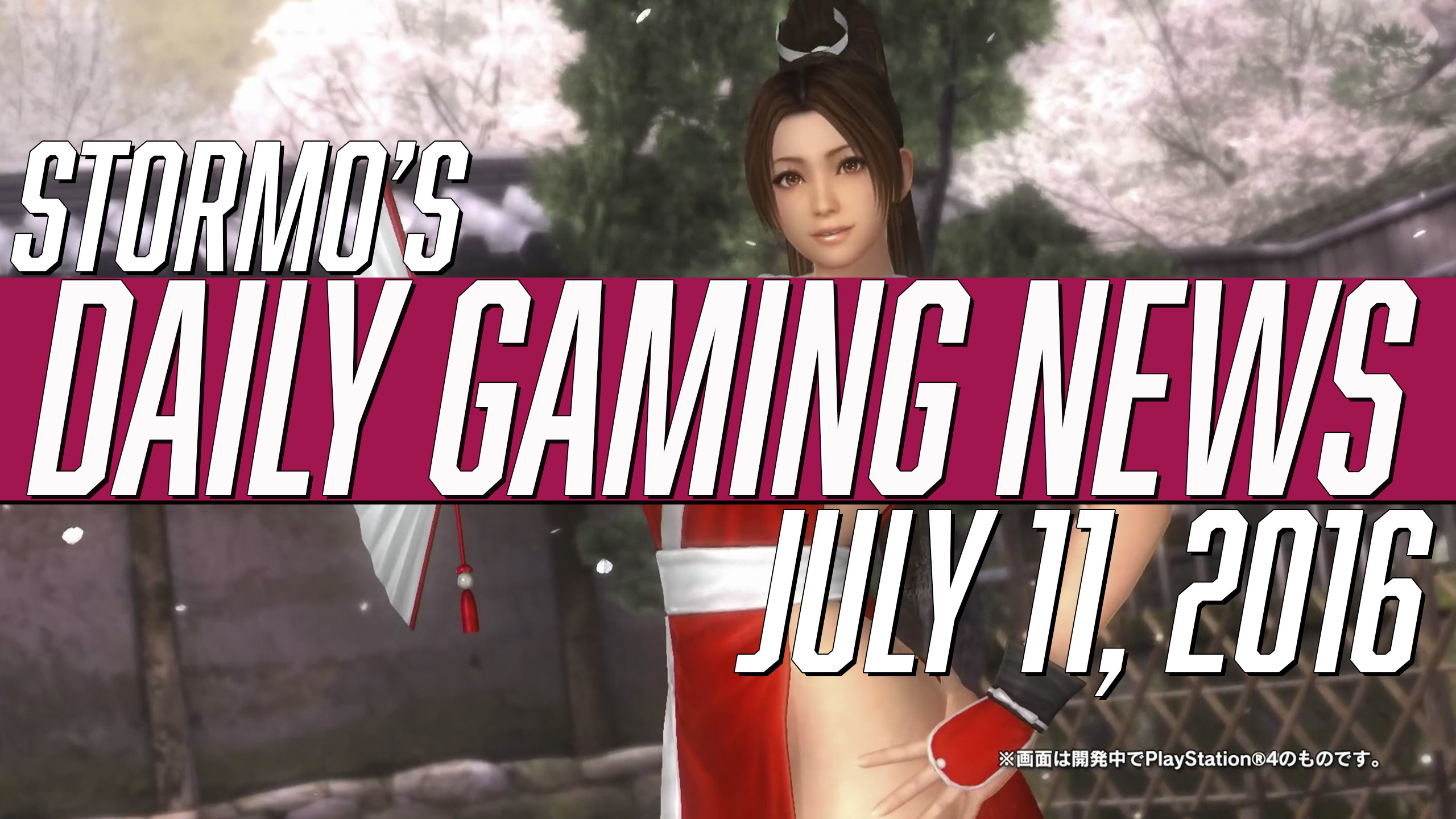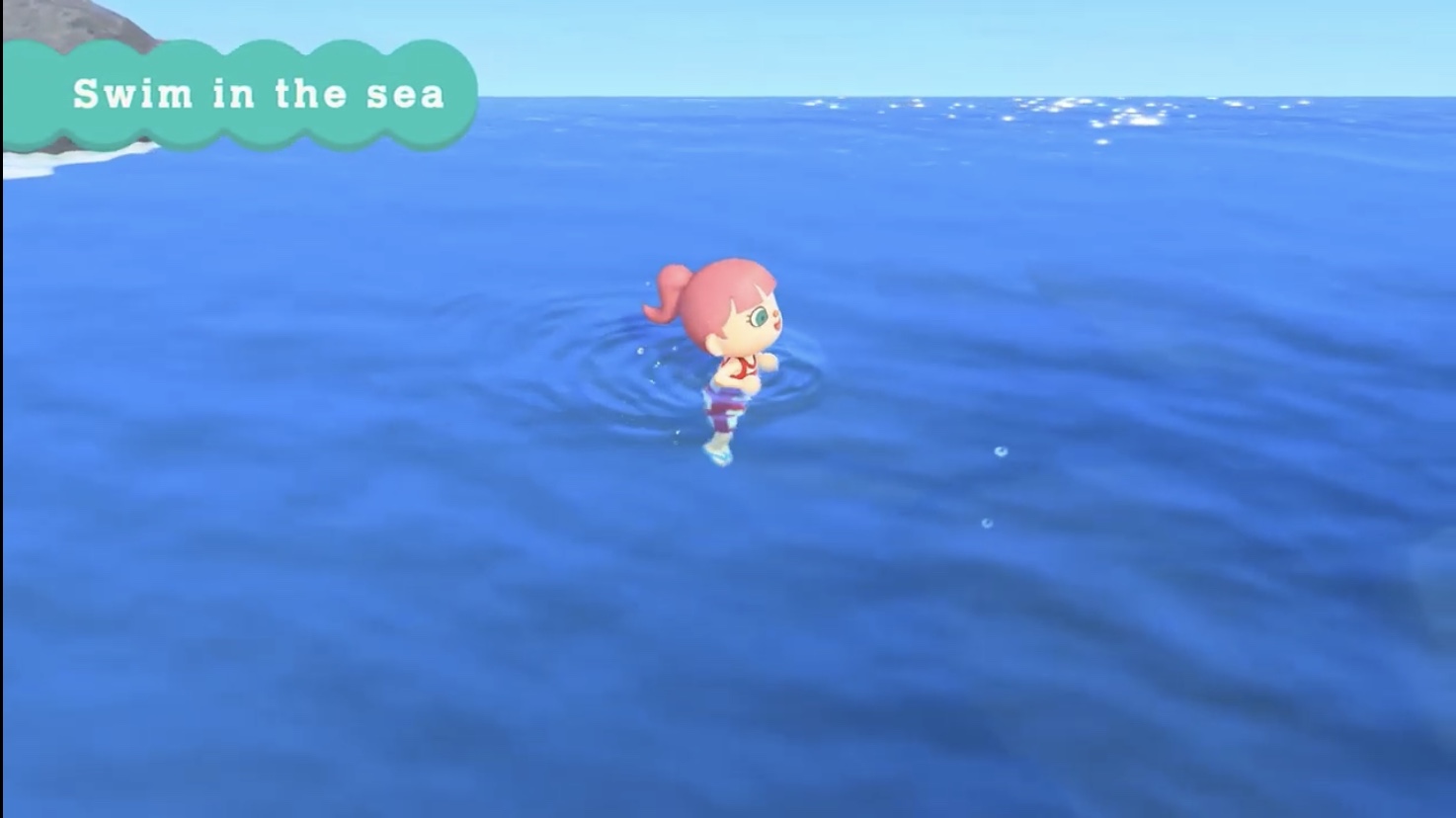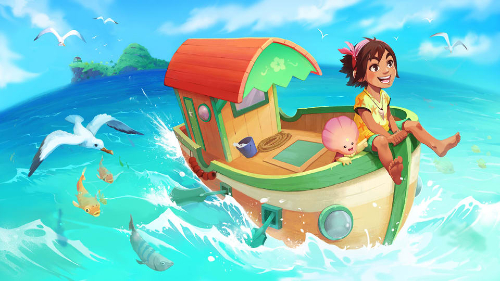
With the COVID-19 pandemic affecting everyone around the globe, calm and relaxing video games have seen a surge in popularity. They offer a highly sought after distraction from isolation and are a welcome contrast to the dreaded news each evening. Summer in Mara promises players a relaxing and calm farming experience, combined with gorgeous visuals and an engaging story. However, the final product is a dull experience that doesn’t compete with other games on the market.
Summer in Mara follows the story of a young girl named Koa. Koa is involved in a shipwreck as a baby and is found by her eventual adopted grandmother, Yaya Haku. Koa grows up on a tropical island where she is taught to live a peaceful life and ensure she gives back what she takes from nature. One day a mysterious sea creature named Napopo washes ashore, which sets in motion an adventure for Koa to sail off the island and explore the greater world of Mara.
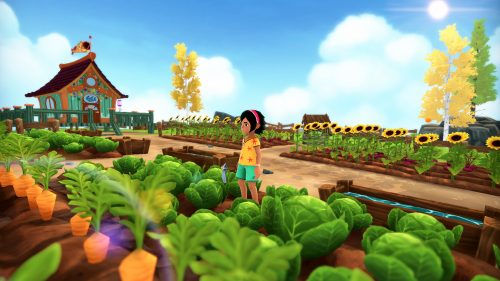
A key theme in the game is that you must look after the island you call home. You must go back to harvest vegetables, replant any trees you cut down and take care of animals that are in farmhouses. The island is your main base of operations and is the only place where you can craft new items and grow crops. So while the adventure sees you sailing around different islands and interacting with many characters, there truly is no place like home. While the idea is intriguing it unfortunately backfires, which I will get into a bit later, due to constant backtracking.
Summer in Mara features several farming sim staples, such as a day/night cycle, a stamina meter and a hunger meter. Crops will take multiple days to grow until they’re ready for harvest, but can be watered to speed up the process. You’ll be forgiven for initially being worried about these systems. The game rushes through a couple of days to go through some tutorials and introduce players to the mechanics, so you’ll notice Koa gets hungry quickly and you’re told to care for crops, etc.

But the truth is, the game is very relaxed when it comes to punishing players. Koa’s hunger meter depletes very slowly to the point the kid won’t have to eat for days at a time! Also, by default, there are already plenty of fruit trees growing on the island, so you’ll quickly amass a food horde in your inventory. As for tending to crops, you won’t be punished for leaving them unattended or for not watering them. They’ll still be there ready for harvest no matter how long it has been. If your stamina fully depletes, Koa will suddenly be forced to go to sleep and the day will skip to the next one. This low difficulty is what Summer in Mara is all about – a relaxing game that simply wants you to enjoy its world. This same concept works for titles such as Animal Crossing, but Summer in Mara misses the beat due to some poor design choices.
Once you leave Koa and start exploring the greater world, you’re going to spend a lot of time backtracking and completing a never ending list of fetch quests. For example, on Qalis, the first island you visit, you’re looking for a woman named Saimi. When you arrive at the docks, you are told she lives at the summit of Qalis in a lighthouse. After traveling all that way, Saimi doesn’t want to speak with you, so you have to traverse back down and ask the first characters you met how to win her favour. Those characters however, won’t help you unless you craft some thread for them. This means you have to go back to your home island, craft the thread, then travel all the way back to Qalis to progress. Then you’ll talk to another character and they’ll want something in return for more information about Saimi. Rinse and repeat. This cycle of backtracking and fetch questing continues through the entirety of the game. It’s uninspiring, lacklustre and just gets repetitive after only a few hours. It’s a complete fetch quest-athon.
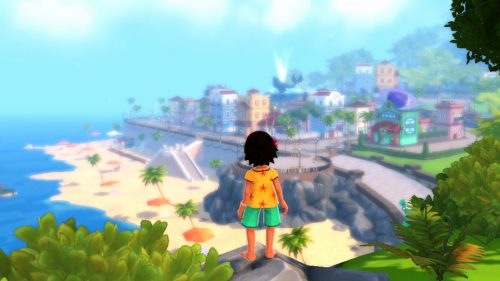
Due to the game’s cel-shaded graphics and the fact you travel between islands via a boat, there are some distinctive The Legend of Zelda: The Wind Waker vibes. Their genres are different of course, yet they share a common design flaw. Wind Waker is often criticised for the large areas of empty ocean and smaller, unappealing islands (granted this has been forgiven in later years). The same can be said for Summer in Mara, only on a worse scale. It’s simply not engaging to travel between locales unless you stumble upon a sunken treasure horde or a fishing spot. Many of the islands also don’t feature towns or sprawling cities – they’re mostly just small land masses that have particular crafting resources. You lose that sense of wonder and awe you get from exploring a bigger area.
Despite the dull gameplay, Summer in Mara does have some redeeming features. The cel-shaded graphics look gorgeous and give the game a cartoon vibe. However, it should be noted on the Nintendo Switch there are some noticeable frame rate drops when exploring larger areas. When characters speak to each other you will be presented with beautifully drawn 2D avatars, which further compliment the cel-shaded graphics. The music is also well suited, featuring relaxing and distinctive island themes.

Summer in Mara has some questionable design choices that will really test your patience. The game is all about traveling back and forth to your home island to craft materials and complete a seemingly endless amount of fetch quests. While the game is supposed to be a calming and relaxing experience, it ends up just being frustrating due to all the repetition. There is some enjoyment to be had if you are a fan of farming games and will be playing this very casually, but otherwise there are better titles available.
Summer in Mara was reviewed on a regular Nintendo Switch console with a review copy provided by the developer. It is also available on PC, Xbox One and PS4.
- Gorgeous cel-shaded graphics - Easy/calm game
- Constant backtracking/repetition - Heavy reliance on fetch quests - Some frame rate issues


